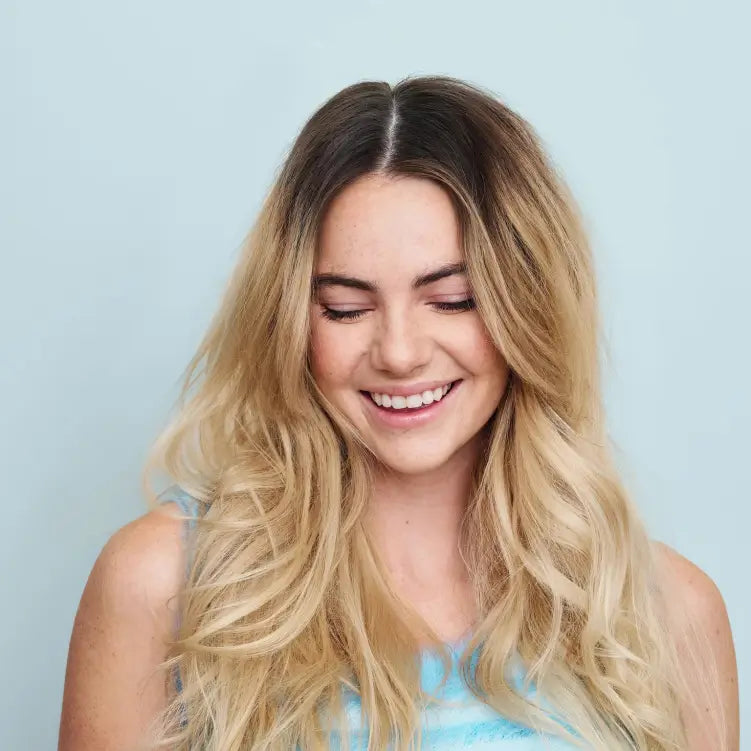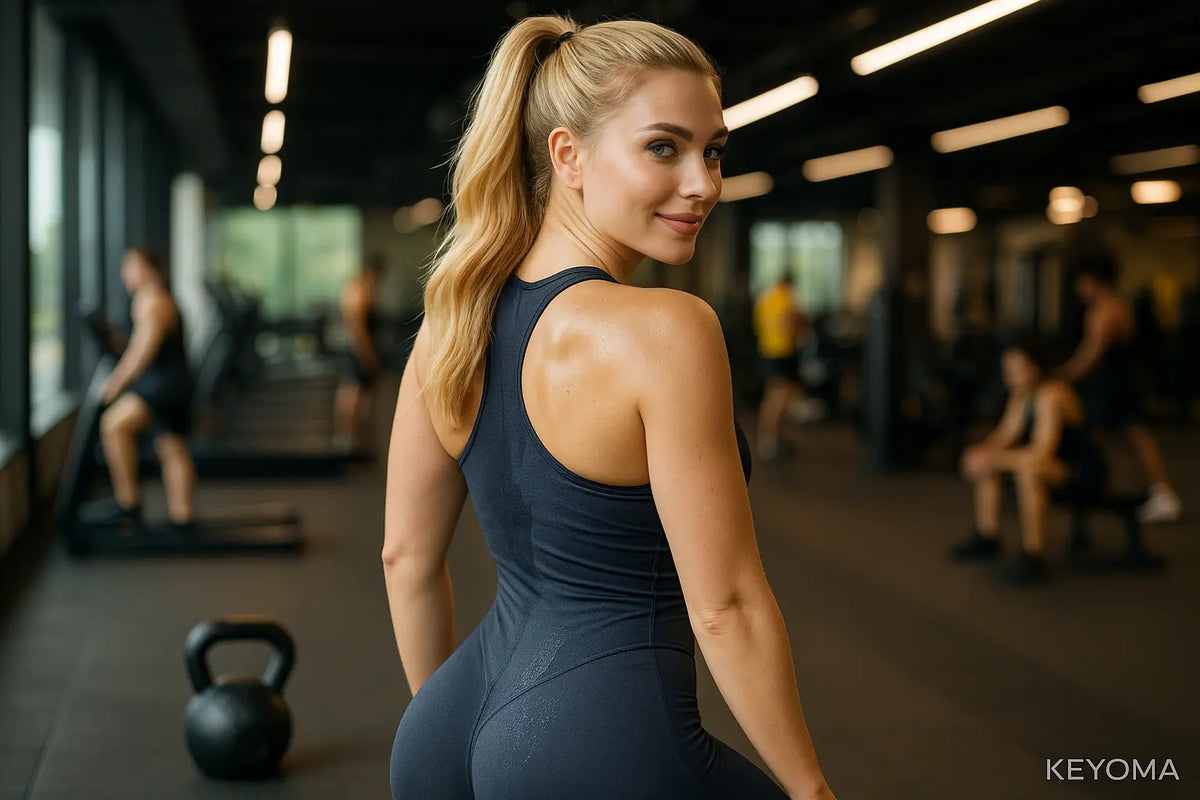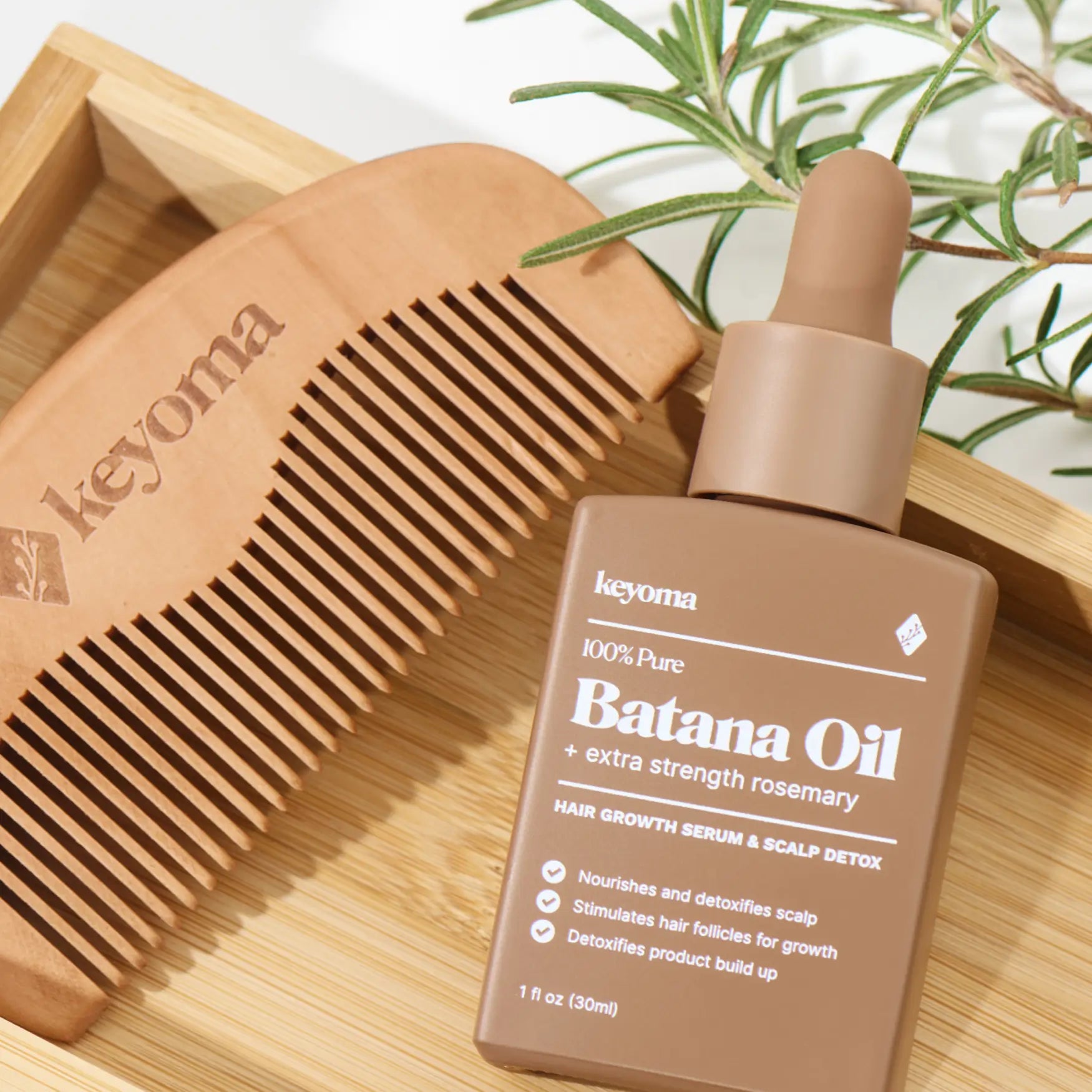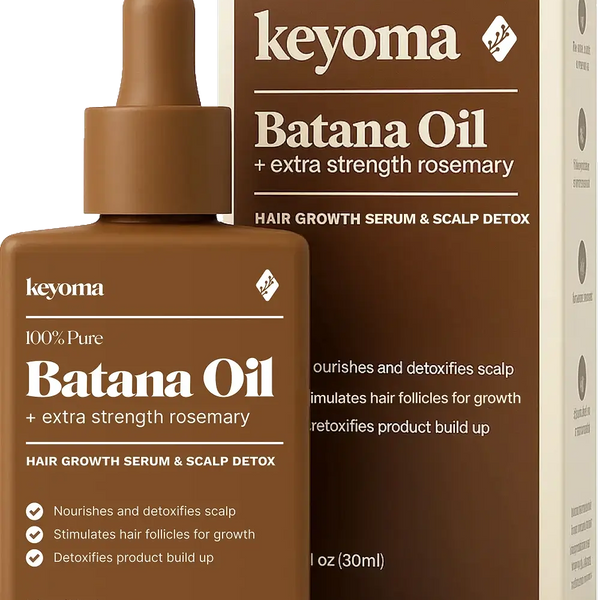In this article
In a survey of 103 African-American women, nearly one in three admitted they’ve skipped workouts because of hair-related concerns, such as sweat ruining their style, frizz from humidity, or the fear that frequent washing might cause hair fall.
It’s not hard to see how worries like these could feed into the broader belief, shared by both women and men, that exercise itself might lead to hair loss.
But spoiler alert: It's a big, fat misconception, and you don’t have to choose between staying fit and keeping your hair healthy.
In this guide, I’ll walk you through what science actually says about working out and hair loss, the myths that keep getting passed around, and the practical hair care tips that help protect your scalp and strands without skipping a single gym session.
Does Working Out Cause Hair Loss?
Working out, by itself, does not cause hair loss. In fact, there are no studies that directly link exercise, whether resistance training, cardio, or low-intensity workouts, as a primary cause of hair loss.
Quite the opposite, what’s well-established among health specialists and non-specialists alike is that exercise supports overall wellness—and that includes hair and scalp health.
It helps boost blood circulation, regulate hormones, and lower stress levels—all of which, if neglected, can contribute to long-term hair loss.
So no, there’s no reason to cancel your gym membership or give up your afternoon runs altogether.

Now, if there’s one recent study that hints at a workout–hair loss connection, it’s a 2017 Korean observational study titled “The Association between Exercise and Androgenetic Alopecia".
In it, researchers suggested that intense exercise might contribute to hair loss through oxidative stress.
However, no direct measurements of oxidative markers, hormones, or enzyme activity were made in participants. This means that while the theory sounds biologically plausible, it’s still speculative at best and has yet to be proven by direct scientific evidence.
Common Misconceptions About Exercise and Hair Loss
If working out doesn’t actually cause hair loss, then how did that idea even start? Let’s break down some of the most common misconceptions that continue to fuel the confusion.
Misconception #1: Heavy Weightlifting Increases Testosterone, Therefore More Hair Loss
For context, testosterone is the hormone that produces the byproduct dihydrotestosterone (DHT)—the compound known to shrink hair follicles in people with androgenetic alopecia or pattern baldness.
Heavy weightlifting can cause a temporary spike in testosterone. This easily leads to the assumption that it also boosts DHT levels, which is why many believe workouts can trigger hair loss.
The truth is, it’s not the presence of DHT itself that causes hair loss, but your sensitivity to it. And that’s something heavily influenced by your genetic makeup—whether you have more DHT receptors or simply a stronger reaction to it—not by the workout itself.
Misconception #2: Sweating During Workouts Damages Hair Follicles and Causes Baldness
This belief likely comes from what we see and feel after a workout—greasy roots, an itchy scalp, and extra hair fall in the shower.
And yes, since sweat is salty and slightly acidic, it’s easy to assume it could “burn” or weaken the follicles over time. The truth? It doesn’t.
What can cause issues is letting that sweat sit too long on your scalp. When mixed with sebum, product buildup, and dirt, it can create the perfect environment for imbalance, disrupting your scalp microbiome, triggering inflammation, or clogging follicles.
Even then, those conditions usually just lead to temporary shedding, not permanent hair loss. So no, sweat itself isn’t the enemy. It’s the lack of proper cleansing afterward that does the real damage.
Misconception #3: Post-Exercise Hairfall is a Sign of Hair Loss
Seeing a few strands fall out after a heavy sweat session doesn’t automatically mean you’re losing your hair.
In fact, shedding is a normal part of the hair growth cycle, especially during the telogen phase, when older strands naturally release.
So yes, it’s completely expected to lose some hairs every day. You’re just more likely to notice it right after your workout because you’re washing, drying, or running your hands through your hair.
What’s realistic, though, is that certain exercise-related triggers can contribute to temporary shedding—things like overtraining, scalp friction from tight headbands or ponytails, and poor post-workout hygiene.
Fortunately, these are all manageable and rarely cause lasting damage when addressed early.
What Causes Hair Loss in Active People
Overtraining
When your workout routine goes from challenging to extreme, your body reacts by increasing cortisol—a stress hormone that, when chronically elevated, can disrupt the hair growth cycle.
Specifically, it can push more follicles into the telogen (resting) phase, leading to telogen effluvium, a form of temporary shedding.
Nutritional Deficiencies
High levels of physical activity increase your nutritional demands. If you're not replenishing with a balanced diet, especially lacking in iron, zinc, vitamin D, and protein, your hair can suffer.
Iron deficiency anemia, in particular, has been closely linked to hair loss-chronic diffuse telogen hair loss, to be specific, according to a 2017 study.
Combine that with overtraining, and you’ve got the perfect chaos combo for stress, fatigue, and excessive shedding.
Dehydration
Water is essential for cellular health and circulation, including the blood flow that feeds your hair follicles. When you're dehydrated, your scalp may become dry, tight, and less oxygenated, creating an unfavorable environment for growth.
Over time, this can lead to brittle strands and increased breakage, especially if paired with sun exposure or sweat buildup.
Extended Periods of Tight Hairstyles
Gym buns, ponytails, cornrows, or braids that are pulled too tight for too long can lead to traction alopecia.
This condition occurs when constant pulling damages the follicle and causes thinning, particularly around the hairline. If caught early, it's reversible, but chronic tension can lead to permanent follicle damage.
Poor Hair Hygiene
When sweat, oils, and leftover styling products are left to linger post-workout, they create the perfect conditions for irritation and imbalance. Here are some common post-gym habits that can lead to shedding:
-
Skipping a rinse or wash after workouts, especially after intense sweating
-
Wearing tight headbands or hats for too long, which traps moisture and bacteria
-
Using heavy styling products pre-workout, then letting them bake under heat and sweat
-
Letting hair air-dry while drenched in sweat, which can promote microbial overgrowth
-
Using pH-balanced or clarifying shampoos too infrequently, allowing buildup to linger
-
Using harsh shampoos that aren’t sulfate-free, which strips the scalp and triggers more oil production or irritation
Work Out Supplements
Some gym supplements, particularly those that affect hormone levels, are frequently debated in hair loss circles.
Case in point, anabolic steroids, which can disrupt the natural testosterone-to-DHT balance, accelerating androgenetic alopecia in predisposed individuals.
Tips to Maintain Hair Health While Keeping an Active Lifestyle
Being active doesn't mean your hair has to suffer. In fact, with the right habits, you can keep both your gains and your strands in top shape
Below are smart, gym-friendly routines that support your hair’s health, protect your scalp, and reduce shedding, especially if you're working out several times a week.
Rinse or Wash After Every Sweat Session
Whether it’s a light jog or a heavy lift day, sweat and oils can sit on your scalp and cause buildup.
Rinsing with water is often enough for light workouts, but if your scalp feels itchy or greasy (which is usually the case if you already have an oily scalp), go for a sulfate-free, pH-balanced cleanser. Stick to 1 to 2 full washes per week.
Use Topical Hair Oils
While natural hair oils are often seen as just a beauty step, they actually serve a functional purpose, especially for those with active lifestyles. From protecting the hair shaft during workouts to replenishing moisture lost from frequent washing, oils can support both strength and shine.
Here's how they help:
-
Rosemary oil has been shown to improve scalp circulation, which supports hair follicle health and may reduce shedding related to poor blood flow.
-
Niacinamide-based serums help reduce inflammation caused by sweat-induced irritation or tight hairstyles.
-
Batana oil blends can coat strands, making them more resistant to friction-related breakage during workouts.
If you’re working out often, apply a small amount of oil to your ends or hairline before heading to the gym. Avoid applying it directly to the scalp before sweating heavily as it can trap heat and make your scalp feel greasy faster.
Loosen Up Your Hairstyles
Tight ponytails, slick gym buns, and snug braids may look sleek for a workout, but they come with a hidden cost: repeated tension on the hair shaft and follicles.
Over time, this constant pulling can lead to thinning around the hairline and temples.
To reduce this risk, go for low-tension hairstyles that minimize tugging without compromising your workout. Use silk or satin scrunchies instead of tight elastics to lessen friction and pulling.
I will say this, though: more likely than not, you’re not in the gym doing reps all day, and you’ll only have that tight hairstyle on for a few hours, so you’re probably in the clear.
Still, to play it safe, alternate your part or ponytail placement, and let your hair down for most of the day to give your scalp a breather.
Eat a Nutrient-Dense Diet
When you're active, your body burns through nutrients faster, including those essential for healthy hair growth. Here’s how a nutrient-rich diet helps:
-
Protein: Hair is primarily made of keratin, a type of protein. If you're not consuming enough, especially during intense training, you might notice slower growth or increased shedding.
-
Iron: Carries oxygen to the follicles. Low iron (especially common in menstruating women or vegans) has been directly linked to chronic telogen effluvium.
-
Zinc: Supports oil gland function around the follicle and helps reduce inflammation.
-
Vitamin D: Plays a role in hair follicle cycling. Deficiency is associated with various types of hair loss, including alopecia areata.
-
B vitamins (like biotin and niacin): Help convert food into energy and support healthy cell turnover in the scalp.
To support your hair while staying active, include iron-rich greens, eggs, fish, legumes, nuts, and seeds in your meals. Pair iron sources with vitamin C (like citrus or bell peppers) for better absorption.
Better yet, check out our previous guide on Best Foods for Hair Growth. We dive into all these nutrients in detail there.
And whatever you do, avoid crash diets. Rapid restriction doesn’t just drain your energy. It can send your hair straight into a shedding phase.
Protect Your Scalp From UV and Heat Exposure
If you’re working out outdoors—especially under harsh sun—UV rays don’t just age your skin. They can also damage hair follicles, dry out your scalp, and break down the proteins in your strands, making them weaker and more prone to breakage.
Combined with sweat and heat, this can lead to irritation, flakiness, and increased shedding.
To protect your scalp and hair during outdoor workouts (especially in summer):
-
Wear a breathable, UV-blocking hat or visor
-
Apply a UV-protectant hair mist or leave-in spray
-
Avoid (as much as possible) peak sunlight hours (10am–3pm)
Exfoliate Weekly
Exfoliation helps slough off dead skin cells, excess oil, and residue, while clarifying shampoos lift away lingering product buildup. This clears the path for better absorption of topical treatments like hair oils and supports a balanced environment for hair growth.
Use a gentle scalp scrub or exfoliating treatment once a week, either physical (like sugar-based scrubs) or chemical (like salicylic acid formulas).
Pair it with a sulfate-free clarifying shampoo to rinse everything off without stripping your natural oils, and follow with a hydrating, silicone-free conditioner to soothe and re-balance your scalp barrier.
Frequently Asked Questions (FAQs)
Can too much exercise lead to hair loss?
Too much exercise, as in overtraining, can indirectly cause hair loss. Overtraining can spike cortisol, the stress hormone known to disrupt your hair growth cycle and push follicles into the shedding phase.
This kind of hair loss is usually temporary and reversible once training and recovery are balanced again.
Can sweat damage hair follicles?
Sweat does not inherently damage your hair follicles. However, it can lead to buildup, clogged pores, and inflammation, all of which can mess with your scalp microbiome and trigger scalp irritation or temporary shedding.
Do gym supplements cause hair loss?
Some gym supplements may cause hair loss. Anabolic steroids, for example, are well known to accelerate pattern baldness in those genetically prone. They drastically alter your hormone profile and can make shedding worse, especially at the temples and crown.
Final Thoughts on Does Working Out Cause Hair Loss
So, does working out cause hair loss? The short answer: not really. But like most things in wellness, the details matter. It’s not the exercise itself. It’s how you recover, how you nourish your body, and how you care for your scalp.
And speaking of scalp care, I’ve found that what makes the biggest difference isn’t doing less in the gym—it’s doing more for your scalp. For me, that's using a rosemary-infused batana hair oil daily to keep my hair moisturized and shiny even on my busiest workout weeks.
Want more hair-care tips like this? Head over to the Keyoma blog where we break down hair science into simple, actionable steps, especially for women with active, busy lifestyles.
Featured Product
100% Pure Batana Oil + Rosemary









